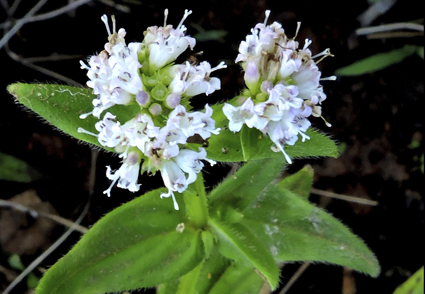Abstract
N/A
References
Bor, N.L. (1949) Two new species of Isachne from India. Kew Bulletin 4 (1): 95–96. https://doi.org/10.2307/4119045
Cope, T.A. (1980) New combinations in Asiatic Grasses. Kew Bulletin 35 (3): 701–704. https://doi.org/10.2307/4110025
Candolle, A.P. de (1830) Prodromus systematis naturalis regnivegetabilis. Vol. 4. Treuttel et Würtz, Paris, 683 pp.
Forsskal, P. (1775) Flora Aegyptiaco–Arabica. cxxiii, Moller, Copenhagen. pp. 178–179.
Govaerts, R., Ruhsam, M., Andersson, L., Robbrecht, E., Bridson, D., Davis, A., Schanzer, I. & Sonké, B. (2014) World Checklist of Rubiaceae. The Board of Trustees of the Royal Botanic Gardens, Kew. Published on the internet: http://apps.kew.org/wcsp/, (Accessed 16 May 2014)
Hooker, J.D. (1880) Flora of British India. Vol. 3. Reeve & Co., Kent, 192 pp.
IUCN Standards and Petitions Committee (2019) Guidelines for Using the IUCN Red list Categories and Criteria. Version 14. Prepared by the Standards and Petitions Committee. Available from: http://www.iucnredlist.org/documents/RedListGuidelines.pdf (accessed 3 December 2021)
Lewis, W.H. (1966) The Asian Genus Neanotis Nomen Novum (Anotis) and Allied Taxa in the Americas (Rubiaceae). Annals of the Missouri Botanical Garden 53: 32?46. https://doi.org/10.2307/2394973
Linnaeus, C. (1753) Species Plantarum. Vol. 1. Laurentii Salvii, Stockholm, pp. 101–119.
Nayar, T.S., Rasyia, B.A. &Sibi, M (2014) Flowering plants of Western Ghats. Tropical Botanical Garden and Research Institute Publication, Thiruvananthapuram. pp. 790–793.
POWO(2020) Plants of the world online. Royal Botanic Gardens, Kew Science. http://www.plantsoftheworldonline.org/ (accessed 10 January 2021)
Sasidharan, N. (2013) Flowering plants of Kerala: CD ROM ver.2.0 Kerala Forest Research Institute Peechi, Kerala.
Steudel, E.G. (1854) Synopsis Glumacearum I. J.B.Metzler, Stuttgartiae, 368 pp.
Sunil, C.N. & Pradeep, A.K. (2001) Another new species of Tripogon (Poaceae) from India. Sida 19 (4): 803–806.
Trinius, C.B. (1826) De graminibus paniceis: Dissertatio botanica altera. Bulletin de l’Acadeìmie impeìriale des sciences de St.-Peìtersbourg., pp. 62–63. https://doi.org/10.5962/bhl.title.15256
Wight, R. & Arnott, G.A.W. (1834) Prodromus Florae Peninsulae Indiae Orientalis. Parbury, Allen & co., London, 480 pp.
Wikström, N., Neupane, S., Kårehed, J., Motley, T.J. & Bremer, B. (2013) Phylogeny of Hedyotis L. (Rubiaceae: Spermacoceae): Redefining a complex Asian-Pacific assemblage. Taxon 62: 357?374. https://doi.org/10.12705/622.2
Cope, T.A. (1980) New combinations in Asiatic Grasses. Kew Bulletin 35 (3): 701–704. https://doi.org/10.2307/4110025
Candolle, A.P. de (1830) Prodromus systematis naturalis regnivegetabilis. Vol. 4. Treuttel et Würtz, Paris, 683 pp.
Forsskal, P. (1775) Flora Aegyptiaco–Arabica. cxxiii, Moller, Copenhagen. pp. 178–179.
Govaerts, R., Ruhsam, M., Andersson, L., Robbrecht, E., Bridson, D., Davis, A., Schanzer, I. & Sonké, B. (2014) World Checklist of Rubiaceae. The Board of Trustees of the Royal Botanic Gardens, Kew. Published on the internet: http://apps.kew.org/wcsp/, (Accessed 16 May 2014)
Hooker, J.D. (1880) Flora of British India. Vol. 3. Reeve & Co., Kent, 192 pp.
IUCN Standards and Petitions Committee (2019) Guidelines for Using the IUCN Red list Categories and Criteria. Version 14. Prepared by the Standards and Petitions Committee. Available from: http://www.iucnredlist.org/documents/RedListGuidelines.pdf (accessed 3 December 2021)
Lewis, W.H. (1966) The Asian Genus Neanotis Nomen Novum (Anotis) and Allied Taxa in the Americas (Rubiaceae). Annals of the Missouri Botanical Garden 53: 32?46. https://doi.org/10.2307/2394973
Linnaeus, C. (1753) Species Plantarum. Vol. 1. Laurentii Salvii, Stockholm, pp. 101–119.
Nayar, T.S., Rasyia, B.A. &Sibi, M (2014) Flowering plants of Western Ghats. Tropical Botanical Garden and Research Institute Publication, Thiruvananthapuram. pp. 790–793.
POWO(2020) Plants of the world online. Royal Botanic Gardens, Kew Science. http://www.plantsoftheworldonline.org/ (accessed 10 January 2021)
Sasidharan, N. (2013) Flowering plants of Kerala: CD ROM ver.2.0 Kerala Forest Research Institute Peechi, Kerala.
Steudel, E.G. (1854) Synopsis Glumacearum I. J.B.Metzler, Stuttgartiae, 368 pp.
Sunil, C.N. & Pradeep, A.K. (2001) Another new species of Tripogon (Poaceae) from India. Sida 19 (4): 803–806.
Trinius, C.B. (1826) De graminibus paniceis: Dissertatio botanica altera. Bulletin de l’Acadeìmie impeìriale des sciences de St.-Peìtersbourg., pp. 62–63. https://doi.org/10.5962/bhl.title.15256
Wight, R. & Arnott, G.A.W. (1834) Prodromus Florae Peninsulae Indiae Orientalis. Parbury, Allen & co., London, 480 pp.
Wikström, N., Neupane, S., Kårehed, J., Motley, T.J. & Bremer, B. (2013) Phylogeny of Hedyotis L. (Rubiaceae: Spermacoceae): Redefining a complex Asian-Pacific assemblage. Taxon 62: 357?374. https://doi.org/10.12705/622.2


